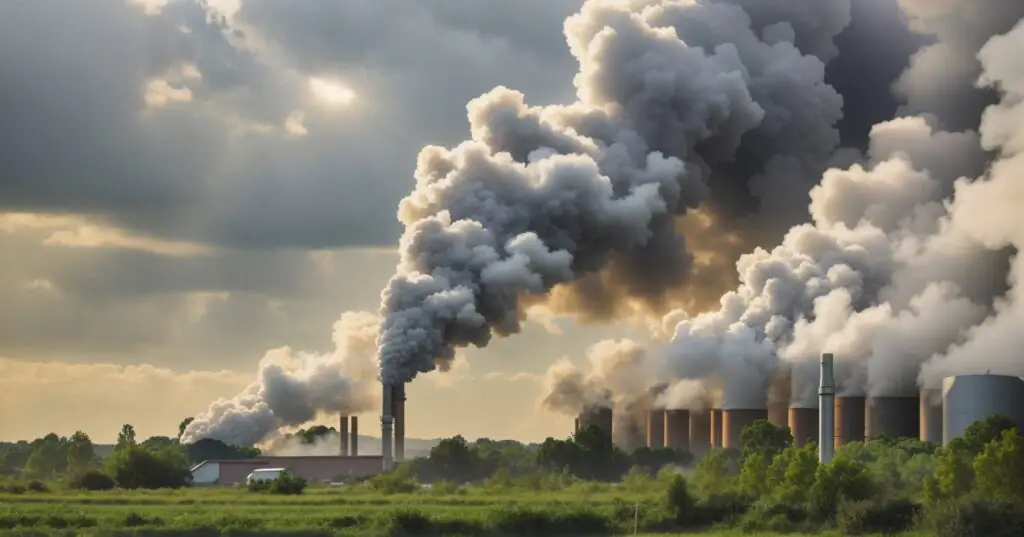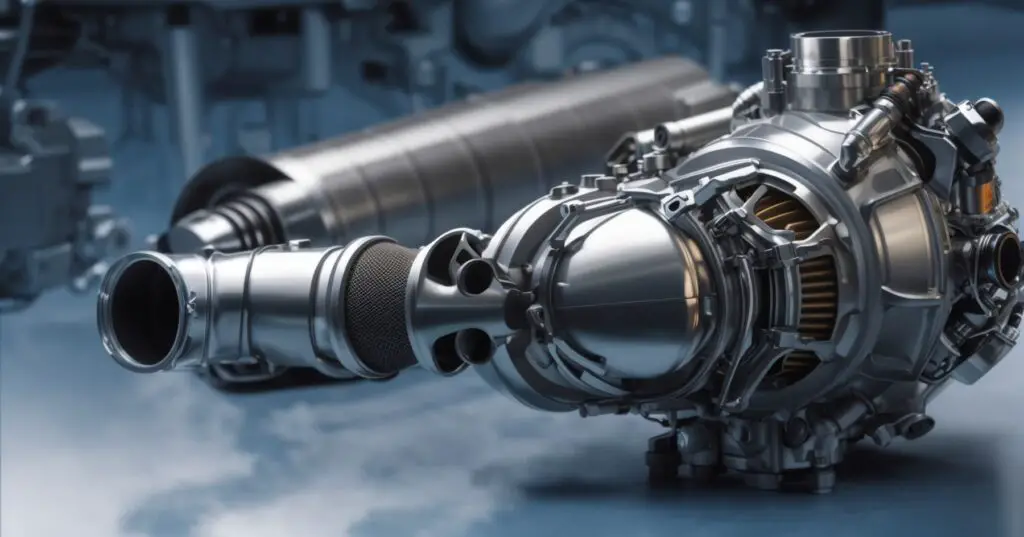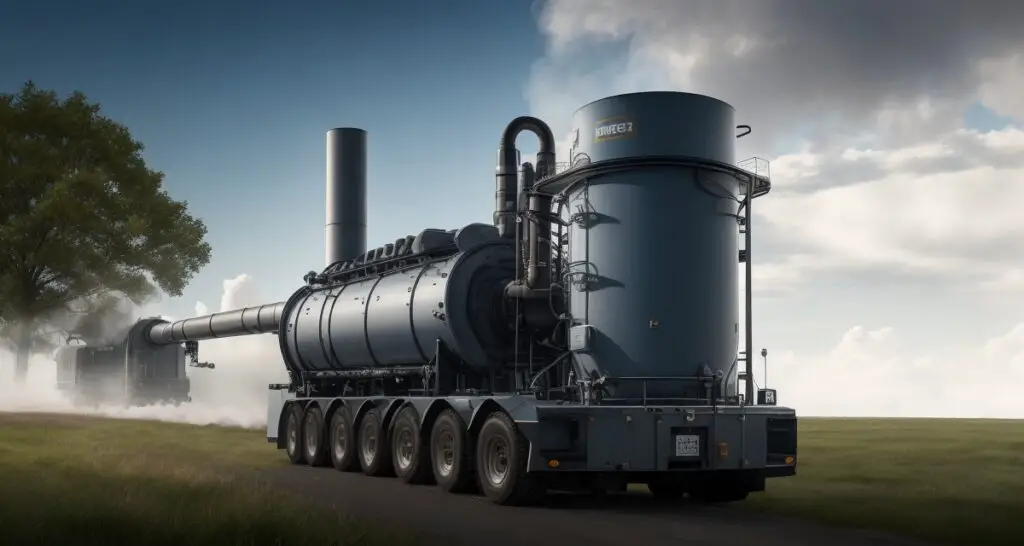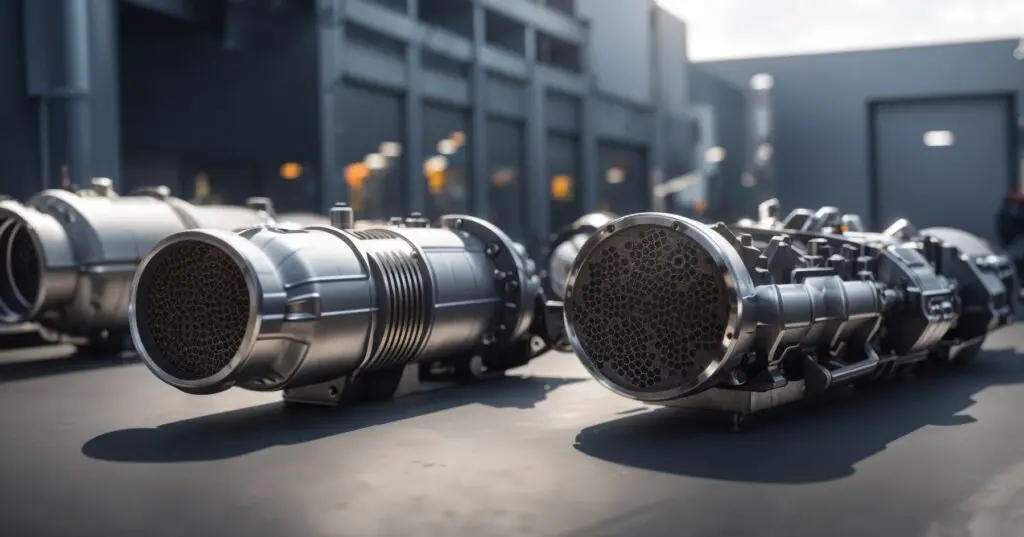In the world of modern automotive technology, the question of “How much does it cost to delete DPF?” has become increasingly relevant. As vehicles have evolved to meet stricter emissions standards, Diesel Particulate Filters (DPF) have been implemented to reduce harmful exhaust emissions. However, some vehicle owners may consider removing or bypassing their DPF systems for various reasons, including improved performance or cost savings.
In this article, we will explore the factors that influence the cost of DPF deletion and provide valuable insights into the considerations one should bear in mind when contemplating such a modification to their vehicle’s exhaust system.
What is a DPF (Diesel Particulate Filter)?
Diesel Particulate Filters (DPFs) are vital components in modern diesel engine vehicles designed to reduce harmful emissions. These innovative devices serve as a critical part of the exhaust system, effectively trapping and removing microscopic particulate matter (soot) generated during combustion. DPFs consist of a porous ceramic or metal honeycomb structure, resembling a catalytic converter, with fine channels or pores that capture the soot particles as exhaust gasses pass through.
DPFs play a pivotal role in mitigating air pollution by preventing the release of harmful particulates into the atmosphere. They are commonly found in diesel-powered cars, trucks, and heavy-duty vehicles, serving as a crucial element in meeting stringent emissions standards.
The inner workings of a DPF involve a complex process of filtration and regeneration. As soot accumulates in the filter over time, it can negatively impact engine performance and emissions. Therefore, DPFs have built-in regeneration mechanisms, which periodically burn off the collected soot, converting it into less harmful substances like ash and gas. This regeneration process helps maintain the filter’s efficiency and prolong its lifespan.
Why consider DPF deletion?
While DPFs undeniably contribute to cleaner air and reduced environmental impact, there are circumstances in which vehicle owners may contemplate their removal. Understanding the reasons behind considering DPF deletion is essential:
1.Performance Enhancement:
Some vehicle enthusiasts seek increased engine performance, which they believe can be achieved by removing the DPF. The removal can potentially reduce backpressure in the exhaust system, allowing for improved airflow and power output.
2.Maintenance Costs:
Over time, DPFs can become clogged or damaged, leading to costly repairs or replacements. For vehicle owners facing frequent DPF issues, deletion may appear as a cost-effective alternative.
3.Fuel Efficiency:
There’s a belief that DPFs can cause a slight reduction in fuel efficiency due to the regeneration process, which consumes Fuel. Removing the DPF may be seen as a way to potentially enhance miles per gallon.
4.Operational Restrictions:
In some cases, commercial vehicles with DPFs may encounter operational restrictions, such as limitations on idling or certain driving conditions. Removal of the DPF may alleviate such constraints.
However, it’s crucial to note that DPF deletion is a complex decision fraught with legal, environmental, and ethical considerations. It’s essential for vehicle owners to be well-informed about the potential consequences and explore alternatives to ensure they make the right choice for their specific situation. In the following sections, we’ll delve deeper into the functionality of DPFs, the legal and environmental aspects of DPF deletion, methods of deletion, factors affecting costs, and more, to help you make an informed decision.
Understanding DPF Functionality

Unraveling the Inner Workings of DPFs
Delving into the intricate mechanics of Diesel Particulate Filters (DPFs) reveals a remarkable and conscientious technology. DPFs, positioned within the exhaust system of diesel-powered vehicles, play an indispensable role in reducing the emission of harmful particulate matter into the environment.
At its core, a DPF is akin to a silent environmental guardian. Its structure, composed of porous ceramic or metallic materials, resembles an intricate honeycomb. This honeycomb matrix is equipped with fine channels or pores, serving as the guardian’s net to ensnare minuscule soot particles, an inevitable byproduct of diesel combustion. These fine filters exhibit a remarkable capability to capture these minute particles as they traverse through the exhaust stream.
To comprehend the beauty of DPF functionality, it is essential to fathom the concept of filtration and regeneration. As the engine operates and the soot particles accumulate within the filter, the DPF embarks on a journey of self-preservation.
Its regeneration mechanism, a sophisticated feature, comes into play. This mechanism, at predetermined intervals, initiates a process whereby the collected soot is meticulously burnt away. Through this transformational process, the soot metamorphoses into less pernicious substances such as ash and gaseous remnants. This elegant dance of filtration and regeneration ensures the DPF’s continued efficacy and prolongs its existence.
Navigating the Challenges: Common DPF Issues
The life of a Diesel Particulate Filter, while astoundingly effective, is not devoid of challenges. Understanding these common issues is integral to appreciating the intricacies of DPF maintenance:
1.Soot Accumulation:
Over time, the DPF accumulates soot particles, necessitating regular cleaning or regeneration. Failure to address this can lead to blockages, impeding exhaust flow and diminishing engine performance.
2.Regeneration Failures:
Sometimes, DPF regeneration may not occur as intended. This can be attributed to various factors, including short driving trips that do not allow for complete regeneration. In such cases, professional intervention may be required.
3.Ash Accumulation:
As soot is converted into ash during regeneration, the ash gradually builds up within the DPF. Unlike soot, ash is not combustible and must be physically removed periodically to prevent clogging.
4.Sensor and System Failures:
DPFs rely on sensors and complex control systems for efficient operation. Malfunctions in these components can lead to improper DPF function, requiring diagnostic and repair work.
5.Physical Damage:
External factors such as road debris or accidents can damage the DPF, necessitating replacement.
6.Aging and Wear:
Like all components, DPFs have a finite lifespan. As they age, their efficiency may decline, and replacement may become the only viable option.
Legal and Environmental Considerations

Navigating Emissions Regulations and DPF Requirements
Embracing a conscientious approach towards Diesel Particulate Filters (DPFs) demands a thorough understanding of the legal and environmental framework governing their usage. DPFs are not merely components within a vehicle; they are integral to upholding stringent emissions regulations aimed at preserving the environment and public health.
1.Emissions Regulations:
In many regions, emissions regulations have become increasingly stringent over the years, necessitating the integration of DPFs in diesel vehicles. These regulations are designed to curb the release of harmful particulate matter and other pollutants into the atmosphere. DPFs act as guardians of compliance, ensuring that vehicles meet these standards by trapping and neutralizing particulate emissions.
2.DPF Requirements:
Emissions regulations often mandate that diesel vehicles, particularly commercial and heavy-duty ones, be equipped with functioning DPFs. This requirement serves as a vital checkpoint, ensuring that vehicles on the road are actively contributing to environmental preservation by minimizing their emissions footprint.
Weighing the Consequences: Penalties for Illegal DPF Removal
While the allure of DPF deletion may beckon some vehicle owners, it is imperative to be acutely aware of the legal ramifications that accompany such actions. Removing or tampering with a DPF in contravention of emissions regulations can result in a series of severe penalties:
1.Legal Sanctions:
Engaging in illegal DPF removal may expose individuals to substantial legal penalties, including fines and potential criminal charges. Authorities view such actions as violations of emissions standards and environmental protection laws.
2.Voided Warranties:
Many vehicle warranties explicitly state that tampering with emissions-related components, including DPFs, will void the warranty. This can translate to significant financial implications if other issues arise with the vehicle.
3.Environmental Impact:
Beyond the legal consequences, the removal of DPFs can have detrimental effects on the environment. It contributes to increased particulate emissions and air pollution, which can have adverse health effects on both humans and the ecosystem.
4.Resale Value:
Vehicles with removed or tampered DPFs may face diminished resale value, as potential buyers may be wary of legal and environmental implications.
5.Regulatory Scrutiny:
Authorities and environmental agencies may subject vehicles suspected of DPF removal to heightened scrutiny and emissions testing, potentially leading to ongoing legal challenges and fines.
Methods of DPF Deletion

DPF Removal and Replacement
When contemplating Diesel Particulate Filter (DPF) deletion, one of the primary methods that come to mind is the complete removal and replacement of the DPF unit. This method involves taking out the existing DPF from the vehicle’s exhaust system and replacing it with a modified or DPF-free exhaust component. Let’s delve into the details of this approach, including the cost breakdown.
Cost Breakdown:
1.DPF Removal Costs:
The process of physically removing the DPF can be labor-intensive, as it requires access to the underside of the vehicle and the exhaust system. Labor costs will vary depending on the complexity of the job and the vehicle’s make and model. It is advisable to seek professional installation to ensure the job is done correctly.
2.DPF Replacement Costs:
The replacement component, which is often a straight pipe or modified exhaust system, comes with its own price tag. These components can vary widely in cost depending on the quality, brand, and compatibility with your vehicle.
3.Labor Costs for Replacement:
Installing the new exhaust component may also require labor costs. This cost should be factored in, as it contributes to the overall expense of DPF removal and replacement.
4.Additional Materials and Parts:
Depending on the specific vehicle and the installation process, there may be Materials and parts required, such as clamps, gaskets, and hardware. These costs can add up.
It’s essential to note that while DPF removal and replacement may initially appear as a cost-effective solution, it often comes with legal and environmental consequences. The removed DPF may need to be stored or disposed of properly, complying with regulations, which can entail further expenses.
DPF Cleaning Services
DPF cleaning services offer an alternative approach to DPF maintenance and potential deletion. Rather than completely removing the DPF, these services aim to restore its functionality by cleaning and regenerating it. Understanding the cost dynamics of such services is crucial for informed decision-making.
Cost Comparison:
1.Cleaning Service Fees:
DPF cleaning services typically charge a fee for the cleaning and regeneration process. The cost can vary based on the service provider, the extent of cleaning required, and the technology used for regeneration. Professional cleaning services employ specialized equipment and techniques to remove accumulated soot and ash from the filter, effectively extending its lifespan.
2.Labor Costs:
Labor charges may also apply, especially if you choose to have a professional service provider perform the cleaning. The complexity of the cleaning process can influence labor costs.
3.Additional Parts or Repairs:
In some cases, DPF cleaning may reveal the need for Repairs or replacement of worn-out components. These costs should be factored in if required.
4.Frequency of Cleaning:
The frequency of DPF cleaning will depend on several factors, including your vehicle’s usage patterns and the quality of fuel used. Understanding how often your DPF may require cleaning can help you estimate long-term costs.
DPF cleaning services present a compelling option for those looking to maintain their DPF’s performance without resorting to complete removal. While it may involve periodic expenses, it aligns with environmental regulations and ensures your vehicle remains compliant with emissions standards.
DPF Tuning and Software Solutions
DPF tuning and software solutions offer a less invasive method of addressing DPF-related issues and exploring potential deletion. These solutions focus on altering the engine’s performance parameters and emission control systems through software adjustments. Let’s delve into the costs involved in this approach.
Costs Involved:
1.Software or Tuning Services:
Employing DPF tuning or software solutions typically entails costs associated with purchasing or acquiring the necessary software or tuning services. These costs can vary depending on the provider, the complexity of the adjustments, and the vehicle’s make and model.
2.Labor or Professional Services:
Implementing DPF tuning may require professional expertise to ensure the adjustments are made correctly. Labor costs may apply if you opt for professional services to perform the tuning.
3.Performance Enhancement Costs:
Some vehicle owners may seek DPF tuning not only to address DPF issues but also to enhance engine performance. Performance-related modifications can incur further costs.
4.Diagnostic and Testing Fees:
To fine-tune the software adjustments and ensure optimal performance, diagnostic and testing procedures may be necessary. These services may be offered by tuning specialists and can contribute to the overall cost.
DPF tuning and software solutions offer a middle ground between complete removal and adherence to emissions regulations. While they may provide performance benefits and address DPF concerns, it’s essential to consider potential warranty implications and consult with professionals experienced in DPF tuning to achieve the desired outcomes while maintaining compliance with relevant regulations.
Factors Affecting DPF Deletion Costs

Vehicle Make and Model
When embarking on the journey of Diesel Particulate Filter (DPF) deletion, it’s imperative to recognize that the costs involved are not uniform; they are contingent on a multitude of factors. One of the foremost determinants is the specific make and model of your vehicle. Let’s explore how this variable plays a pivotal role in shaping DPF deletion costs.
1.Diverse Vehicle Landscape:
The automotive world is a rich tapestry of diverse makes and models, each with its own engineering nuances and intricacies. This diversity translates into varying levels of complexity when it comes to DPF removal or modifications.
2.Complexity Impacts Labor:
The complexity of a vehicle’s exhaust system and the placement of the DPF can significantly influence the labor required for removal or alterations. Vehicles with more intricate configurations may necessitate more time and effort to access and modify the DPF.
3.Availability of Aftermarket Parts:
The availability and cost of aftermarket parts or replacement components can fluctuate greatly depending on the popularity and demand for specific vehicle makes and models. Less common or older vehicles may have limited aftermarket support, potentially increasing costs.
4.Specialized Expertise:
Some vehicle makes and models require specialized knowledge and tools for DPF deletion. Mechanics and technicians familiar with these specific vehicles may charge a premium for their expertise.
5.Diagnostic and Testing:
Diagnostic processes, testing, and adjustments tailored to your vehicle’s make and model may also influence costs. Precision is essential to ensure the vehicle functions optimally post-removal.
Location and Labor Costs
The geographical location where you seek DPF deletion services plays an integral role in shaping the overall costs. Beyond mere geography, labor costs and availability of skilled professionals further contribute to the expenses associated with DPF deletion. Let’s delve into the intricacies of how location and labor costs factor into this equation.
1.Regional Variations:
DPF deletion costs can exhibit significant regional variations. Urban areas with higher living costs and greater demand for automotive services may have elevated labor rates compared to rural or less populated regions.
2.Access to Professionals:
The availability of professionals experienced in DPF deletion and related services can vary from one location to another. In areas with limited expertise, you may need to travel or incur Expenses to access specialized services.
3.Labor Efficiency:
Labor costs are not solely determined by geographical location but also by the efficiency and expertise of the service providers. Experienced technicians may complete the job more quickly and accurately, potentially reducing labor costs.
4.Competition and Pricing:
Areas with a competitive market for automotive services may offer more competitive pricing for DPF deletion. Conversely, areas with a limited number of service providers may charge higher rates due to reduced competition.
5.Additional Services:
The cost of DPF deletion may also encompass Services such as diagnostic checks, emissions testing, and post-deletion adjustments. These services can vary in price depending on location and service provider.
DPF Deletion Cost Estimates

Sample Cost Breakdowns for Various Scenarios
To make informed decisions about Diesel Particulate Filter (DPF) deletion, it’s crucial to have a clear understanding of the potential costs involved. DPF deletion costs can vary widely depending on several factors, and having sample cost breakdowns for various scenarios can provide valuable insights into what to expect when considering this option.
Scenario 1: Passenger Car DPF Removal
In the case of a passenger car, DPF removal may involve lower costs compared to larger vehicles. Here’s a sample cost breakdown for this scenario:
1.Labor Costs:
Removal of the DPF and installation of a replacement exhaust component by a professional mechanic may cost between $500 to $1,000, depending on the vehicle’s make and model.
2.Replacement Component:
The cost of the replacement exhaust component can vary significantly, ranging from $100 to $500 or more, depending on the quality and brand.
3.Additional Materials:
Clamps, gaskets, and other materials may cost around $50 to $100.
4.Total Estimated Cost:
In this scenario, the total estimated cost for DPF removal and replacement can range from $650 to $1,600, factoring in labor, replacement parts, and Materials.
Scenario 2: Heavy-Duty Truck DPF Cleaning
For a heavy-duty truck, opting for DPF cleaning services as an alternative to removal can be a cost-effective choice. Here’s a sample cost breakdown:
1.Cleaning Service Fees:
Professional DPF cleaning services may charge between $300 to $800, depending on the extent of cleaning required.
2.Labor Costs:
Labor charges for the cleaning process may vary, but an estimate of $100 to $200 is common.
3.Additional Repairs:
If any Repairs or parts replacement are necessary, such as sensors or gaskets, this could add another $200 to $500.
4.Total Estimated Cost:
For heavy-duty trucks, the total estimated cost for DPF cleaning can range from $600 to $1,500, encompassing cleaning fees, labor, and potential Repairs.
Scenario 3: Performance Enhancement DPF Tuning
Some vehicle owners may opt for DPF tuning to address issues while enhancing performance. Here’s a sample cost breakdown for this scenario:
1.Software or Tuning Services:
Purchasing or acquiring the necessary software or tuning services can cost between $200 to $800, depending on the vehicle and desired adjustments.
2.Professional Labor:
Professional tuning services provided by experienced technicians may range from $300 to $800, depending on the complexity of the adjustments and the vehicle’s make and model.
3.Diagnostic and Testing:
Diagnostic and testing fees for fine-tuning the adjustments can add an $100 to $300.
4.Total Estimated Cost:
For performance-oriented DPF tuning, the total estimated cost can vary from $600 to $1,900, considering software, professional labor, and diagnostic expenses.
These sample cost breakdowns underscore the significant variability in DPF deletion costs based on the vehicle type, chosen method, and Factors like labor rates and replacement parts. Vehicle owners should use these estimates as a starting point and seek quotes from reputable service providers to get accurate cost assessments tailored to their specific circumstances. Making well-informed decisions about DPF deletion involves understanding the potential financial implications and considering alternative solutions that align with legal and environmental responsibilities.
Risks and Legal Consequences

Legal Ramifications of Illegal DPF Deletion
Engaging in Diesel Particulate Filter (DPF) deletion without adhering to legal and emissions regulations can lead to a myriad of severe legal consequences. It’s imperative to comprehend the gravity of these legal ramifications to make informed choices regarding DPF maintenance or modification.
1.Emissions Regulations Violation:
DPFs are not mere vehicle accessories; they are integral components designed to reduce harmful particulate emissions. Tampering with or removing the DPF violates emissions regulations in many jurisdictions, constituting a serious legal offense.
2.Fines and Penalties:
Authorities take emissions violations seriously. Vehicle owners caught engaging in illegal DPF deletion can face substantial fines. These fines can vary widely depending on regional laws but often amount to thousands of dollars.
3.Vehicle Impoundment:
In some cases, authorities may impound vehicles found to be in violation of emissions regulations. This not only results in Costs but also disrupts daily life and transportation.
4.Criminal Charges:
In extreme cases, repeated or egregious emissions violations can lead to criminal charges. These charges may carry more severe penalties, including probation, community service, or even imprisonment.
5.Environmental Impact:
Beyond the legal consequences, illegal DPF deletion exacerbates air pollution and poses risks to public health and the environment. Responsible vehicle ownership aligns with efforts to reduce the environmental footprint.
Warranty Implications
Warranty considerations are paramount when contemplating DPF deletion. Vehicle warranties typically include provisions related to emissions components, and DPFs fall under this category. Understanding the warranty implications is essential for safeguarding your financial interests.
1.Warranty Voidance:
Most vehicle warranties explicitly state that tampering with emissions-related components, including DPFs, voids the warranty. This means that if you engage in illegal DPF deletion or any modifications that result in warranty voidance, you could be responsible for covering the full cost of any subsequent repairs or issues.
2.Financial Risk:
Vehicle repairs and replacements, especially those involving emissions components, can be exorbitantly expensive. Voiding your warranty exposes you to substantial financial risk, as you would be responsible for covering these costs out of pocket.
3.Loss of Manufacturer Support:
Warranty voidance also entails the loss of manufacturer support for repairs and maintenance. You may find it challenging to obtain manufacturer-backed services and support for your vehicle.
Potential Engine Damage Risks
DPFs are integral to the proper functioning of modern diesel engines, and their removal or tampering can introduce a range of risks related to engine performance and longevity. Understanding these potential engine damage risks is crucial when considering DPF deletion.
1.Increased Soot and Particulate Emissions:
DPFs are designed to trap soot and particulate matter, preventing them from entering the atmosphere. DPF deletion can lead to increased soot emissions, potentially causing carbon buildup in the engine, reduced efficiency, and damage to vital components.
2.Elevated Engine Temperatures:
DPFs also help regulate exhaust temperatures. Removing them can result in higher exhaust temperatures, potentially leading to overheating and damage to engine components, including the turbocharger.
3.Altered Fuel-Air Ratios:
DPF deletion can lead to alterations in the fuel-air ratios and engine tuning. These changes can adversely affect engine performance, fuel efficiency, and overall reliability.
4.Long-Term Engine Wear:
Over time, the absence of a DPF can contribute to increased engine wear and reduced lifespan. Premature engine failure is a real risk associated with illegal DPF deletion.
5.Voided Aftermarket Warranties:
Even if you have an aftermarket warranty, it may become void if you engage in illegal DPF deletion. This further compounds the financial risks associated with potential engine damage.
Alternatives to DPF Deletion
HOW MUCH DOES IT COST TO DELETE DPF?
DPF Regeneration and Maintenance
In the realm of Diesel Particulate Filter (DPF) maintenance and emissions compliance, DPF regeneration and maintenance stand out as a responsible and cost-effective alternative to DPF deletion. Understanding the intricacies of this approach is essential for vehicle owners seeking to uphold emissions standards and environmental responsibility.
1.DPF Regeneration Explained:
DPF regeneration is a process designed to clean and rejuvenate the DPF without removal or deletion. It involves the controlled burning of accumulated soot and particulate matter within the filter. This process can occur passively (during regular driving) or actively (when initiated by the vehicle’s engine control unit).
2.Preventive Maintenance:
Regular preventive maintenance is crucial for ensuring the effectiveness of DPF regeneration. This includes adhering to recommended service intervals, using quality fuels, and following best practices for diesel engine care.
3.Professional Assistance:
If the DPF reaches a point where passive regeneration is insufficient, professional assistance may be required. Some vehicles have built-in diagnostics that can trigger active regeneration when necessary. In cases where active regeneration fails, specialized DPF cleaning services can restore filter functionality.
4.Environmental Responsibility:
DPF regeneration and maintenance align with environmental responsibility by reducing harmful emissions. Proper maintenance ensures that the DPF continues to trap and remove particulate matter from the exhaust, minimizing air pollution.
Emission-Reducing Additives
Emission-reducing additives offer another viable alternative for vehicle owners seeking to enhance DPF performance and minimize emissions. These additives can be introduced into the fuel or engine oil to aid in DPF maintenance and emissions control.
1.Types of Additives:
Emission-reducing additives come in various forms, including diesel particulate filter cleaners and fuel-borne catalysts. These additives are designed to facilitate the combustion of soot and reduce the formation of deposits within the DPF.
2.Regular Usage:
Vehicle owners can incorporate these additives into their maintenance routine by following manufacturer-recommended dosages and application methods. Consistent use can help prevent DPF clogging and maintain optimal filter efficiency.
3.Emissions Compliance:
Using emission-reducing additives supports emissions compliance by ensuring that the DPF functions efficiently. This proactive approach minimizes the risk of non-compliance and associated legal consequences.
4.Fuel Efficiency:
Some additives also claim to improve fuel efficiency by optimizing combustion processes. While the degree of improvement may vary, this can lead to potential cost savings over time.
Upgrading to a Cleaner Engine
For vehicle owners considering a long-term commitment to emissions compliance and reduced environmental impact, upgrading to a cleaner engine represents a compelling alternative to DPF deletion.
1.Cleaner Engine Technologies:
Advances in engine technologies have led to the development of cleaner and more efficient diesel engines. These engines are designed to produce fewer emissions and often incorporate advanced emissions control systems.
2.Environmental Benefits:
Upgrading to a cleaner engine contributes significantly to reducing air pollution and greenhouse gas emissions. This aligns with broader environmental goals and regulatory standards aimed at mitigating the impact of transportation on the environment.
3.Cost Considerations:
While upgrading to a cleaner engine may involve a significant upfront investment, it can result in long-term cost savings. These engines are often more fuel-efficient and may require less maintenance, reducing overall ownership costs.
4.Emissions Compliance:
Cleaner engines are engineered to meet or exceed emissions regulations, eliminating the need for DPF deletion or other modifications to achieve compliance.
5.Long-Term Sustainability:
Investing in a cleaner engine underscores a commitment to long-term sustainability and environmental stewardship. This choice reflects a proactive approach to addressing emissions challenges and reducing the carbon footprint of your vehicle.
Real-Life Case Studies
Stories of Individuals Who Deleted Their DPF
Real-life case studies of individuals who have chosen to delete their Diesel Particulate Filter (DPF) provide invaluable insights into the motivations, challenges, and outcomes associated with this decision. These stories offer a nuanced perspective on the diverse reasons behind DPF deletion.
1.Motivations and Challenges:
Each individual’s story reveals their unique motivations for DPF deletion. Some may have sought improved engine performance, while others may have faced recurrent DPF issues. Understanding these motivations helps shed light on the factors that drive this decision.
2.Technical Insights:
Case studies often delve into the technical aspects of DPF deletion. They may explain the specific methods employed, such as DPF removal and tuning adjustments, offering readers a glimpse into the mechanics of the process.
3.Legal and Environmental Considerations:
These narratives typically touch upon the legal and environmental implications faced by those who deleted their DPF. Readers gain an understanding of the potential legal consequences and environmental impact associated with this choice.
4.Outcomes and Satisfaction:
Case studies provide an opportunity to explore the outcomes of DPF deletion. Did it result in the desired performance improvements? Were there unforeseen challenges or complications? Understanding the real-world outcomes can help readers make more informed decisions.
5.Impact on Maintenance:
These stories often highlight how DPF deletion influenced maintenance requirements. Did it reduce maintenance costs, or did it introduce new challenges? These insights help vehicle owners anticipate potential maintenance needs.
Cost Analysis and Outcomes
A critical aspect of real-life case studies on DPF deletion is the cost analysis and outcomes. These studies offer a detailed examination of the financial implications, helping readers assess whether DPF deletion aligns with their budget and expectations.
1.Detailed Cost Breakdown:
Case studies typically provide a breakdown of the costs involved in DPF deletion. This may include labor fees, replacement parts, tuning services, and any unexpected expenses incurred during the process.
2.Comparative Analysis:
Some case studies offer comparative analyses that juxtapose the costs of DPF deletion with alternative solutions, such as DPF regeneration, maintenance, or upgrading to a cleaner engine. This comparative perspective assists readers in evaluating the cost-effectiveness of DPF deletion.
3.Long-Term Considerations:
Beyond the initial costs, case studies often explore the long-term financial considerations. Did DPF deletion result in long-term savings or unexpected expenses? Understanding the sustainability of the financial choice is vital.
4.Environmental and Legal Repercussions:
Case studies also touch upon the legal and environmental consequences faced by those who deleted their DPF. These repercussions may include fines, legal battles, and potential impacts on resale value.
5.Overall Satisfaction:
The satisfaction and contentment of individuals who chose DPF deletion are crucial aspects of these case studies. Did they achieve their intended goals, or do they regret the decision? Real-life accounts provide readers with valuable insights into the human aspect of this choice.
Strategies for Economical DPF Maintenance
Prolonging DPF Lifespan
Extending the life of your Diesel Particulate Filter (DPF) is a prudent approach that not only ensures emissions compliance but also contributes to cost-effectiveness. Here are key tips to help you maximize your DPF’s longevity:
1. Stick to Maintenance Schedules:
Consistently follow the manufacturer-recommended maintenance schedules for your vehicle. Regular servicing detects and rectifies issues early, preventing potential damage to the DPF.
2. Choose Quality Diesel Fuel:
Opt for high-quality diesel fuel with low sulfur content. Cleaner fuel leads to fewer particulate emissions, which in turn reduces the strain on your DPF.
3. Drive Mindfully:
Be conscious of your driving habits. Frequent short trips and stop-and-start driving can impede DPF regeneration. Occasionally, plan longer drives to allow for proper regeneration.
4. Minimize Engine Idling:
Excessive engine idling can contribute to soot buildup within the DPF. When parked for extended periods, consider turning off the engine to minimize idling time.
5. Utilize Fuel Additives:
Emission-reducing additives can help prevent soot accumulation in the DPF and enhance its efficiency. Always adhere to the manufacturer’s recommendations when using additives.
Cost-Conscious Maintenance Practices
Employing cost-conscious DPF maintenance practices is vital to ensure emissions compliance without straining your budget. Consider the following strategies:
1. Regular Inspection:
Incorporate routine inspections of the DPF and related components to identify signs of damage or wear. Detecting issues early can result in less expensive repairs.
2. DIY Cleaning:
For some vehicles, DIY DPF cleaning can be a viable cost-saving option. Make sure to follow the manufacturer’s guidelines and exercise caution when undertaking such tasks.
3. Professional Cleaning:
When professional cleaning becomes necessary, take the time to shop around for competitive prices from reputable service providers. Comparing quotes ensures you receive the best value.
4. Leverage Warranty Coverage:
If your vehicle is still under warranty, take advantage of it for DPF-related issues. Warranty coverage can substantially reduce repair expenses.
5. Timely Issue Resolution:
Promptly address DPF-related issues as they arise. Ignoring warning lights or unusual engine behavior can lead to more expensive repairs down the road.
Effective Cost Negotiation with Service Providers
Negotiating costs with service providers is a valuable skill that can lead to significant cost savings when dealing with DPF-related services. Here’s how to negotiate effectively:
1. Solicit Multiple Quotes:
Seek price quotes from several service providers. This approach provides you with a better understanding of prevailing market rates and empowers you to negotiate from an informed position.
2. Bundle Services:
If you require multiple services, such as DPF cleaning and maintenance, inquire about bundle discounts. Many providers offer reduced rates when services are bundled together.
3. Explore Available Discounts:
Ask about any available discounts, seasonal promotions, or loyalty programs. Service providers often extend reduced rates during specific times or to returning customers.
4. Seek Clarity on Services:
Ensure you have a clear understanding of what each service quote encompasses. Request itemized breakdowns to identify potential areas for negotiation.
5. Communicate Your Budget:
Be transparent about your budget constraints when discussing costs with the service provider. They may be willing to collaborate with you to find cost-effective solutions.
6. Consider Long-Term Agreements:
If you anticipate requiring recurring DPF maintenance services, discuss the possibility of long-term service contracts that offer discounted rates.
7. Maintain Professionalism:
Throughout negotiations, maintain a courteous and professional demeanor. Building a positive rapport can facilitate mutually beneficial agreements.
Future Trends in DPF Technology
Advances in DPF Technology
As the automotive industry continues to evolve, so too does the technology surrounding Diesel Particulate Filters (DPFs). Staying informed about the latest advancements is essential for vehicle owners and manufacturers alike. Here are some of the exciting developments in DPF technology:
1. Advanced Materials:
DPFs are benefitting from the integration of advanced materials that enhance filtration efficiency and durability. Innovations in ceramic and metal substrates are making DPFs more robust and effective at trapping particulate matter.
2. Enhanced Regeneration Methods:
Future DPFs may feature more efficient regeneration methods. Improved temperature control, advanced catalysts, and optimized combustion processes will make regeneration more effective and less energy-intensive.
3. Predictive Maintenance:
DPFs equipped with sophisticated sensors and predictive analytics are on the horizon. These systems can monitor the filter’s condition in real-time and provide insights into when maintenance is required, reducing downtime and costly repairs.
4. Modular Designs:
Modular DPF designs are becoming increasingly prevalent. These systems allow for easier maintenance and replacement of individual components, reducing overall costs and extending the DPF’s lifespan.
5. Integration with Emission Controls:
Future DPFs will likely be seamlessly integrated with other emission control systems, such as selective catalytic reduction (SCR). This holistic approach ensures more effective emissions reduction and compliance with stringent regulations.
Potential Impact on Costs
The evolution of DPF technology has the potential to influence costs for vehicle owners, both in terms of upfront investments and long-term maintenance. Here’s how these advancements may impact costs:
1. Initial Costs:
While advanced DPF technology may result in slightly higher initial costs for vehicles, these investments are offset by improved durability and efficiency. In the long run, vehicle owners may experience fewer DPF-related expenses.
2. Maintenance Efficiency:
Predictive maintenance capabilities can reduce the likelihood of unexpected breakdowns and costly repairs. Vehicle owners benefit from proactive maintenance scheduling, minimizing downtime and expenses.
3. Fuel Efficiency:
Enhanced DPFs can contribute to improved fuel efficiency by optimizing combustion processes. This translates to long-term cost savings as vehicle owners spend less on fuel.
4. Compliance Costs:
As emissions regulations become more stringent, advanced DPF technology helps vehicle owners comply with these regulations without incurring excessive penalties. Avoiding fines and legal repercussions is a cost-saving factor.
5. Longevity:
DPFs equipped with advanced materials and design improvements last longer and require less frequent replacement. This translates to reduced replacement costs over the lifespan of the vehicle.
6. Resale Value:
Vehicles equipped with advanced DPF technology may have higher resale values, as they are more likely to meet emissions standards and attract environmentally conscious buyers.
Conclusion
In the world of diesel vehicles, the decision to delete a Diesel Particulate Filter (DPF) carries multifaceted implications. Understanding the motivations, legal consequences, and environmental responsibilities associated with DPF deletion is vital. It’s crucial to consider not only the immediate costs but also the long-term financial, legal, and environmental impacts. Exploring alternative DPF maintenance methods and embracing evolving DPF technologies can pave the way for cost-effective and responsible solutions that align with emissions standards and sustainability goals. Ultimately, making an informed decision regarding DPF deletion requires a holistic view that balances immediate financial considerations with broader legal and environmental responsibilities.
FAQS:
What is DPF deletion, and why do people consider it?
DFP deletion refers to the removal of the Diesel Particulate Filter (DPF) from a diesel-powered vehicle’s exhaust system. People consider it for various reasons, primarily to improve engine performance, address recurrent DPF issues, or enhance fuel efficiency.
What are the typical costs associated with DPF deletion?
The costs of DPF deletion can vary widely depending on factors like the vehicle make and model, location, chosen method (removal, cleaning, tuning), and labor costs. On average, DPF deletion costs can range from a few hundred to several thousand dollars.
Are there legal consequences to DPF deletion?
Yes, there can be legal consequences to DPF deletion. Removing or tampering with emissions control components like the DPF often violates emissions regulations in many jurisdictions. Penalties can include fines, vehicle impoundment, and even criminal charges in extreme cases.
How can I reduce the costs of DPF deletion?
To reduce the costs of DPF deletion, you can explore cost-effective alternatives like DPF cleaning or regeneration. Seeking competitive quotes from reputable service providers and negotiating costs can help lower expenses.
What are the long-term financial considerations of DPF deletion?
Long-term financial considerations include potential engine damage, increased maintenance costs, and the risk of warranty voidance. These factors can outweigh the initial cost savings of DPF deletion.

